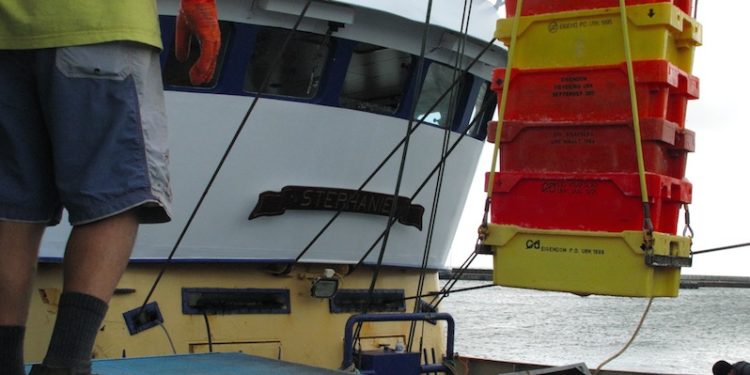The European Scientific, Technical and Economic Committee for Fisheries (STECF) has recently published its annual report on the performance of the Common Fisheries Policy (CFP) as regards the progress on the situation of the fish stocks and exploitation levels.
According to Europêche, decades of self-sacrifice is returning Europe’s fisheries to greatness, since the report clearly shows that status of stocks is improving significantly. It also reflects an overall downward trend in the fishing pressure.
‘Additional efforts are still needed, particularly in the Mediterranean,’ Europêche comments on the report by STECF, the European Commission’s scientific body which provides independent scientific advice and supports the implementation of the CFP.
STECF’s data enables policy-makers to build their decisions on robust and sound knowledge about the level of exploitation that fish stocks can sustain as well as effects of fishing on marine ecosystems.
STECF report provides evidence of positive trends in many fish stocks across Europe. For instance, when stating that among the almost 70 stocks fully assessed, the proportion of overexploited stocks decreased from more than 70% to close to 40% over the last ten years. In addition, the report points out that the proportion of the assessed stocks outside the safe biological limits follows the same decreasing trend, from 65% in 2003 to 38% in 2015.
Concerning the exploitation rates of fish stocks, the STECF report also brings good news since around half of the stocks assessed have reached sustainable levels, in line with the objectives set in the CFP, well before the given 2020 deadline given. As regards the trend in biomass, the report shows improvement in all EU waters, with the exception of the Mediterranean and Black sea. For the fully assessed stocks, the biomass ratio in 2015 is around 35% higher than in 2003.
‘Many stocks in Europe have recovered and currently delivering sustainable catches,’ said Europêche President Javier Garat.
‘This is not a coincidence or a fortunate accident; it came at the expense of the many efforts made by the fishing industry, which respected stringent TACs and suffered a strong reduction of fleets. Just to give an example, despite the enlargements of the EU, the number of EU vessels in 2015 was 85,154; which is 18,693 fewer than in 1996. We welcome that these sacrifices are paying off and result in higher catches, better economic performance and reduction of fuel consumption. We are not complacent though, the fishing sector looks forward to continuing its close collaboration with scientists, governments and the European Commission to increase the number of fish stocks at sustainable levels, improve knowledge on data deficient stocks, minimise any possible impact on the environment and operate within the limits set in the CFP,’ he said, but added a word of warning regarding the Mediterranean.
‘As far as the Mediterranean is concerned, while acknowledging the delicate state of the stocks, the fishing sector has taken the lead on the recovery of the Mediterranean together with the EU, scientific community and governments. The spectacular recovery of bluefin tuna, whose quota has been increased by 20% every year, is an illustrative example of the high potential for recovery.’
‘The STECF report shows the very good status of most of our target stocks,’ said EAPO President Pim Visser, commenting on the graphs supplied as part of the STECF report.
‘Numerous successful stories are found in many fisheries in the north-east Atlantic. The fisheries of many of these stocks are certified under the MSC standard which in itself is proof of the healthy status and the sound management of these stocks. A very remarkable example is the Plaice in the North Sea, also MSC certified, which counts with the highest level of biomass ever reported (226.008 tonnes in 2002 compared to 945.709 tonnes in 2016). The report also shows the need to improve factual knowledge of high quality on stocks which have not been studied in detail so far. In this day and age, proxy approaches of limited quality no longer suffice.’
1
2









